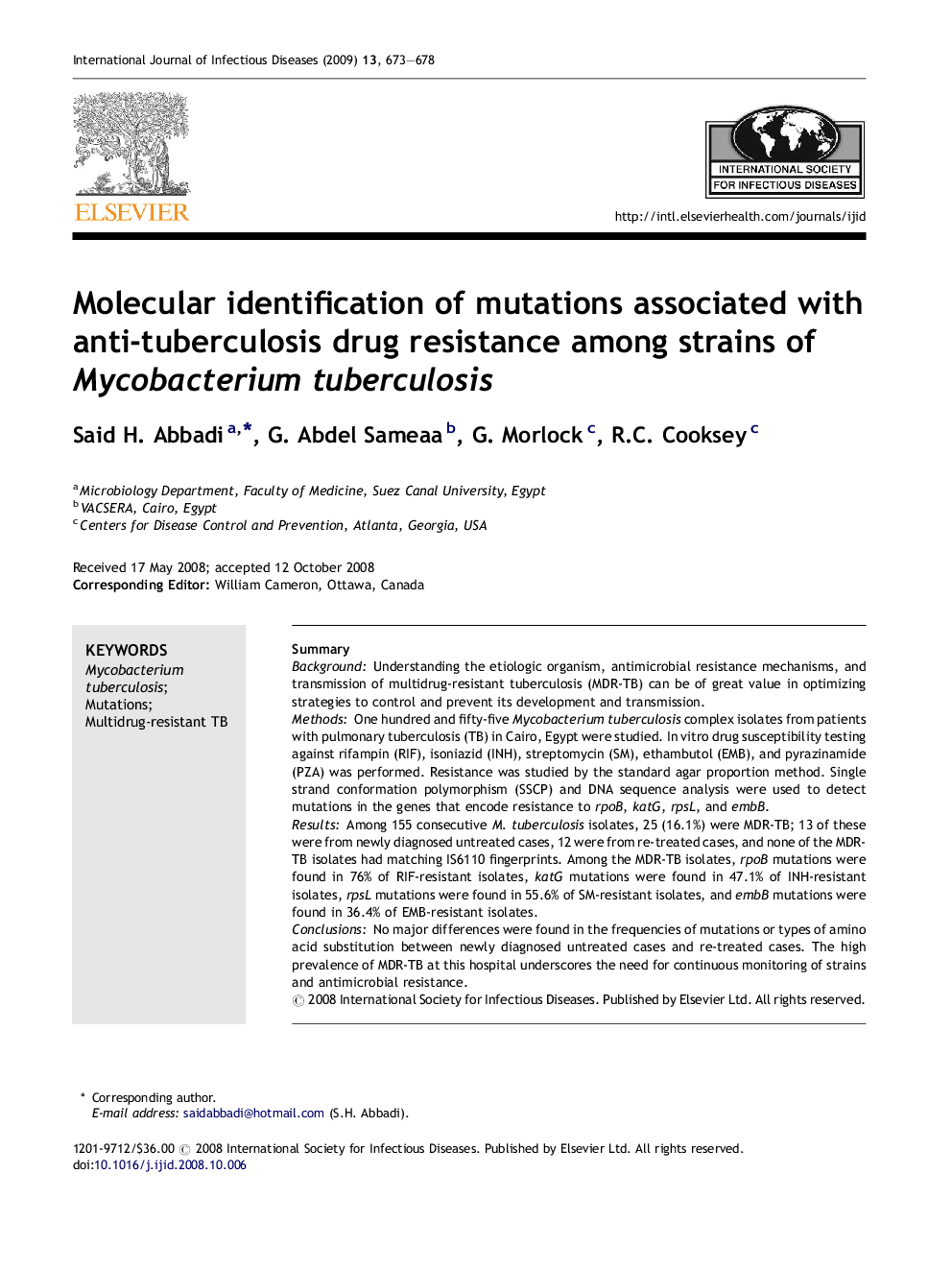| Article ID | Journal | Published Year | Pages | File Type |
|---|---|---|---|---|
| 3364502 | International Journal of Infectious Diseases | 2009 | 6 Pages |
SummaryBackgroundUnderstanding the etiologic organism, antimicrobial resistance mechanisms, and transmission of multidrug-resistant tuberculosis (MDR-TB) can be of great value in optimizing strategies to control and prevent its development and transmission.MethodsOne hundred and fifty-five Mycobacterium tuberculosis complex isolates from patients with pulmonary tuberculosis (TB) in Cairo, Egypt were studied. In vitro drug susceptibility testing against rifampin (RIF), isoniazid (INH), streptomycin (SM), ethambutol (EMB), and pyrazinamide (PZA) was performed. Resistance was studied by the standard agar proportion method. Single strand conformation polymorphism (SSCP) and DNA sequence analysis were used to detect mutations in the genes that encode resistance to rpoB, katG, rpsL, and embB.ResultsAmong 155 consecutive M. tuberculosis isolates, 25 (16.1%) were MDR-TB; 13 of these were from newly diagnosed untreated cases, 12 were from re-treated cases, and none of the MDR-TB isolates had matching IS6110 fingerprints. Among the MDR-TB isolates, rpoB mutations were found in 76% of RIF-resistant isolates, katG mutations were found in 47.1% of INH-resistant isolates, rpsL mutations were found in 55.6% of SM-resistant isolates, and embB mutations were found in 36.4% of EMB-resistant isolates.ConclusionsNo major differences were found in the frequencies of mutations or types of amino acid substitution between newly diagnosed untreated cases and re-treated cases. The high prevalence of MDR-TB at this hospital underscores the need for continuous monitoring of strains and antimicrobial resistance.
